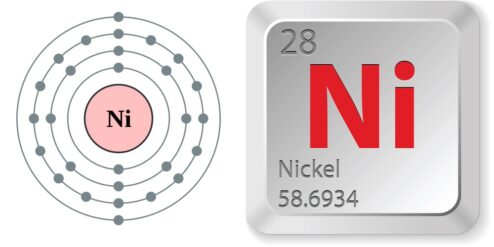Introduzione: Oatmeal is a popular breakfast food known for its high nutritional value. It is packed with essential nutrients such as fiber, protein, vitamins, and minerals. However, one aspect of oatmeal’s nutritional profile that is often overlooked is its nickel content. This article will delve into the composition of oatmeal, the role of nickel in human nutrition, and how to measure the nickel content in oatmeal. It will also compare the nickel levels in different types of oatmeal and discuss the health implications of nickel consumption from oatmeal.
Understanding the Composition of Oatmeal
Oatmeal is made from oats, a type of cereal grain. It is rich in dietary fiber, particularly beta-glucan, a type of soluble fiber that has been linked to improved heart health. Oatmeal also contains a good amount of protein and is low in fat. It is a good source of several vitamins and minerals, including magnesium, phosphorus, zinc, and vitamin B1. However, oatmeal also contains trace amounts of various other elements, including nickel.
Nickel in Oatmeal: A Detailed Analysis
Nickel is a trace element that naturally occurs in many types of food, including oatmeal. The exact amount of nickel in oatmeal can vary depending on several factors, such as the type of oats used, the soil in which the oats were grown, and the water used in cooking the oatmeal. On average, oatmeal contains about 0.13 mg of nickel per 100 grams. This is a relatively low amount, especially when compared to other foods that are high in nickel, such as chocolate and nuts.
The Role of Nickel in Human Nutrition
Nickel plays a crucial role in the human body, despite being required in very small amounts. It is involved in several metabolic processes and is necessary for the proper functioning of certain enzymes. Nickel also plays a role in the absorption and utilization of other nutrients, such as iron. However, too much nickel can be harmful. High levels of nickel can lead to nickel allergy, a condition that causes skin rashes and other allergic reactions.
How to Measure Nickel Content in Oatmeal
The nickel content in oatmeal can be measured using various scientific methods. One of the most common methods is atomic absorption spectrometry, a technique that measures the concentration of specific elements in a sample. This method involves heating the sample to a high temperature to produce atoms, which are then measured using a spectrometer. Another method is inductively coupled plasma mass spectrometry, which uses plasma to ionize the sample and a mass spectrometer to measure the ions.
Comparing Nickel Levels in Different Types of Oatmeal
The nickel content can vary significantly between different types of oatmeal. For instance, steel-cut oats, which are whole oat groats that have been chopped into pieces, tend to have higher nickel levels than rolled oats, which are steamed and rolled into flakes. Instant oatmeal, which is pre-cooked, dried, and rolled into very thin flakes, usually has the lowest nickel content. This is likely because the processing methods used to make instant oatmeal remove some of the nickel.
Health Implications of Nickel Consumption from Oatmeal
While nickel is an essential trace element, consuming too much of it can have negative health effects. In particular, people who are allergic to nickel may experience symptoms such as skin rashes, itching, and redness after consuming foods high in nickel. However, the amount of nickel in oatmeal is generally too low to cause these symptoms in most people. For those who are concerned about their nickel intake, there are plenty of other nutritious foods that are low in nickel, such as fruits, vegetables, and lean meats.
Conclusioni: Oatmeal is a nutritious food that contains a small amount of nickel. While nickel is an essential trace element, it is important to keep its intake in check, especially for those who are allergic to it. The nickel content in oatmeal can vary depending on several factors, but it is generally low compared to other foods. Therefore, oatmeal can be a healthy part of a balanced diet for most people.
Per approfondire:
- USDA FoodData Central: This database provides detailed nutritional information for thousands of foods, including oatmeal.
- National Institutes of Health: Nickel: This page provides information on the role of nickel in human health and its potential health effects.
- American Academy of Allergy, Asthma & Immunology: Nickel Allergy: This page provides information on nickel allergy, including its symptoms and treatment.
- Scientific Reports: Nickel content in food: This study provides detailed information on the nickel content in various foods.
- Journal of Food Composition and Analysis: Nickel content in oats: This research article provides detailed information on the nickel content in different types of oats.


